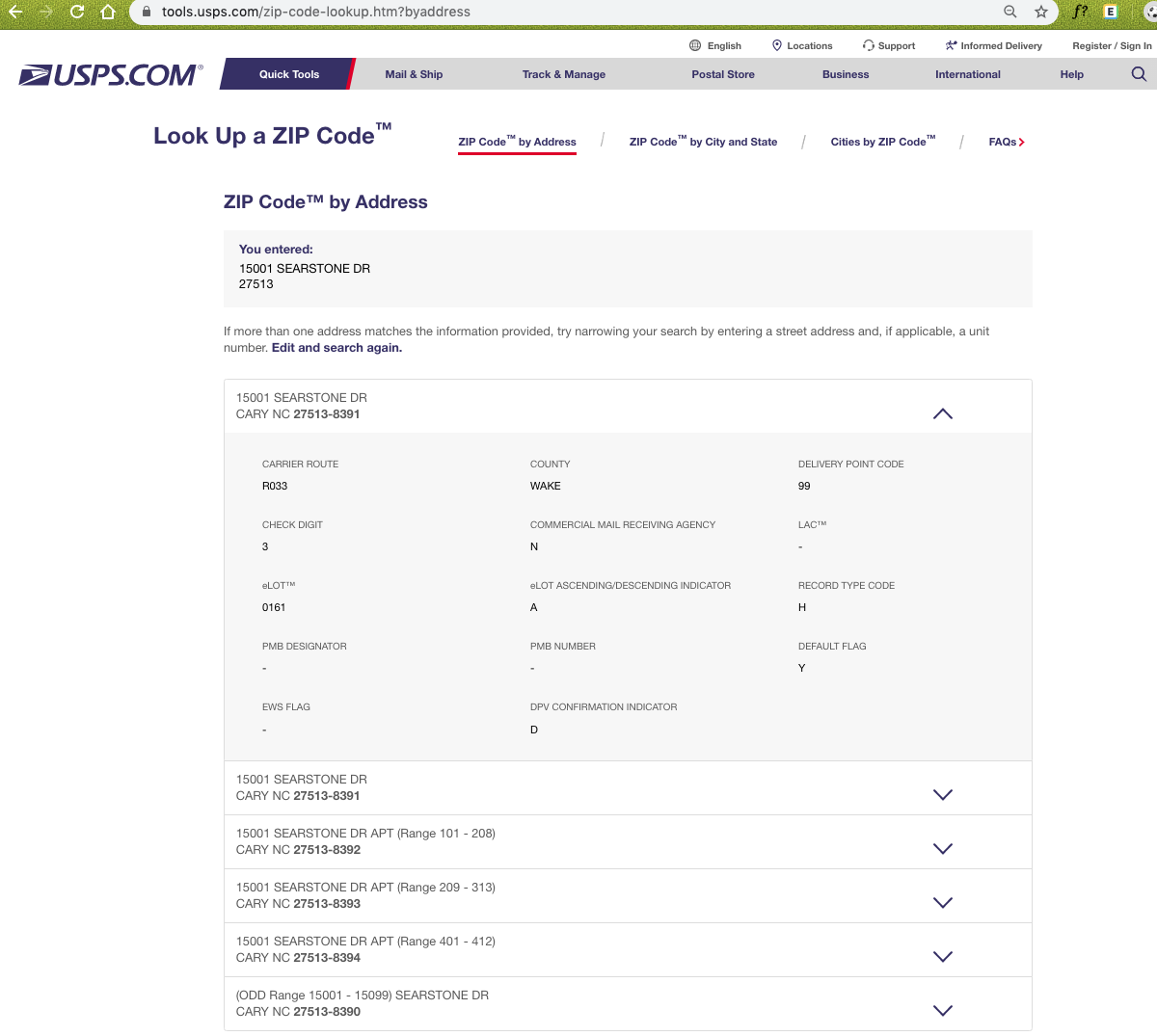How would you handle USPS Address Standardization for Non-Existing Secondary Address?
In United State Postal Service(USPS) system, there are different address types: S (street), P (PO Box), H (High-Rise), F (Firm), R (Rural), G (General Delivery). According to USPS, only “F” and “H” record types have secondary addresses. See details on USPS’s website: Address Information System Products Technical Guide (https://postalpro.usps.com/mnt/glusterfs/2020-02/AIS_Technical_Guide.pdf, page 27).
USPS Standardization Returns the Secondary Address When It Does Not Exist.
USgeocoder ran into an interesting case recently for USPS address standardization for secondary address.
Sample address:
200 Innovation Blvd, Suite 150
State College, PA 16803
According to USPS Online Lookup by Address tool, this is a “S” type of address. So it should not have a secondary address.
However according to USPS online tool, it standardizes this address to:
200 INNOVATION BLVD STE 150
STATE COLLEGE PA 16803-6602
Here is a screenshot from USPS online tool. You can see its record type is “S” and it should not have a secondary address. However USPS Online Tool standardizes the street address to “200 INNOVATION BLVD STE 150”.

Now, if you change Suite 150 to Suite 10000000, a number that obviously does not exist, USPS online tool still returns “200 INNOVATION BLVD SUITE 10000000” as its standardized address. This shows that USPS simply changed the secondary address designator “Suite” to “STE” and added the original number to the standardized address output.
Here is the screenshot that shows the USPS result for input address “200 INNOVATION BLVD SUITE 10000000”:

USgeocoder drops the secondary address if it does not exit
USgeocoder takes a different approach than USPS Online Tool.
As part of USgeocoder’s data service offerings, USgeocoder provides Address Standardization service using USPS and US Census standards. USgeocoder has the entire USPS address data installed in its system. However USgeocoder handles the non-existing secondary address differently than USPS does.
If an address is not a “F” or “H” record, USgeocoder considers it does not have a secondary address by USPS standards and drops the secondary address entirely. USgeocoder does not include the secondary address in the standardized address output.
In addition, for “F” and “H” records, USPS provides the number range for the secondary address. If the secondary address number is not within the range provided by USPS, USgeocoder also considers it’s a non-existing secondary address and excludes it from the standardized address output.
So for address:
200 Innovation Blvd, Suite 15
State College, PA 16803
USgeocoder standardizes it to:
200 INNOVATION BLVD
State College, PA 16803-6603
Now let’s try an address that does have an secondary address:
15001 SEARSTONE DR APT 308
Cary, NC 17513
This is a “H” record. It has different zip4s for different APT ranges:

USgeocoder standardizes it as “15001 SEARSTONE DR APT 308, 27513-8393”. As you can see, 8393 is the right zip4 for this secondary address.
If the input is “15001 Searstone Dr Apt 30800000, 27513”, USgeocoder drops “Apt 30800000” and returns “15001 SEARSTONE DR, 27513-8391” as its standardized address. 8391 is the zip4 for the primary address “15001 Searstone Dr”.
So the bottom line is if the address is not a “F” or “H” record, USgeocoder drops the secondary address and returns the zip4 for the primary address. With USPS online tool, it simply returns the secondary address from the original input if the secondary address does not exist.
Which approach would you take?



Leave a Reply
You must be logged in to post a comment.